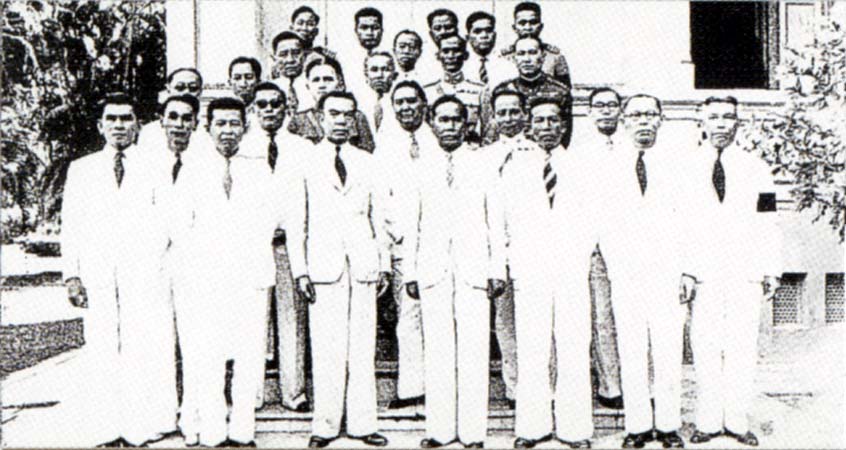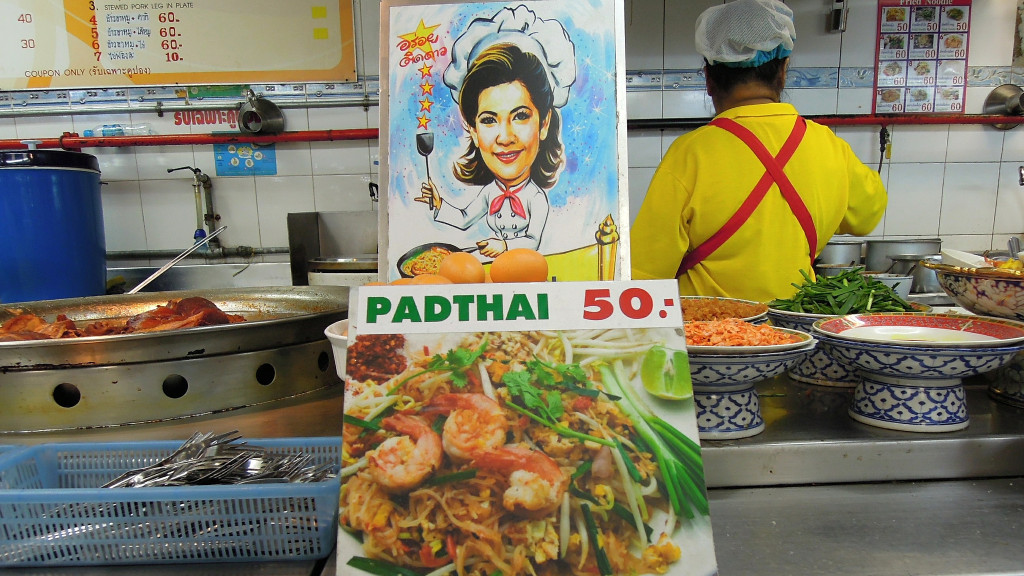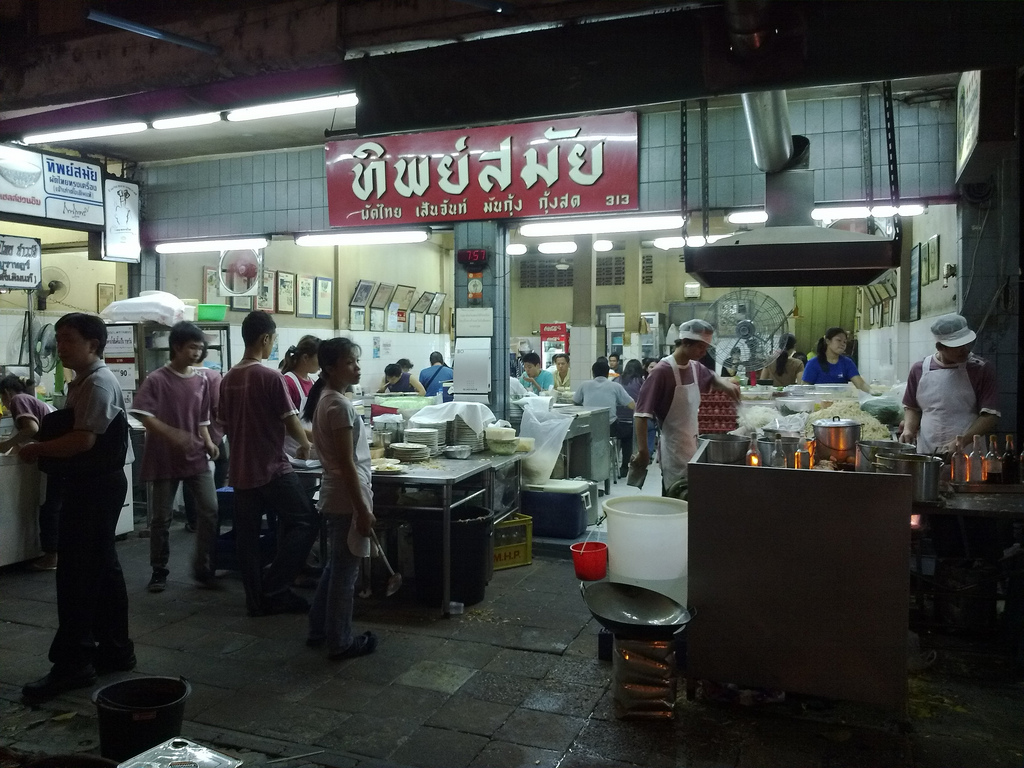Tuk Tuk Tours
Explore Bangkok by the iconic tuk tuk
Possibly one of the most recognised Thai foods abroad, pad thai might not be the most widely consumed dish inside Thailand – we’d probably give that gong to somtum, a fiery papaya salad from the northeast – but it is nonetheless certainly a popular meal among Thais. Whereas abroad it is often found made with chicken, pork, beef and other meats in order to cater to foreign tastes, in authentic Thai cuisine it is almost always eaten simply with dried shrimps and tofu, and optionally a generous helping of fresh, shell-on prawns for an added taste of the sea.

But what most of those who tuck into a plate of pad thai while holidaying in Thailand don’t know is that there is a back story in the history of pad thai and the introduction to Thai cuisine of a noodle dish that is, at its roots, essentially Chinese. Pad thai is only a relatively recent entrant to the Thai food arena, and traces its origins to a period of ultra-nationalism in Thailand in the wake of the 1932 revolution that ended absolute monarchy and gave rise to the democratic system of constitutional monarchy that has existed since.
As part of the campaign to promote Thai nationalism led by then prime minister Field Marshal Plaek Phibunsongkhram in the late 1930s, a public contest was held to find a new national noodle dish – and the winning entry was the plate of rice noodles, preserved radish, beansprouts, peanuts and egg that we know and love today. But there was more to it than that. The wider aim at the time was to westernise and modernise Thailand, a country which had taken on this new name as a replacement for Siam. Part of the plan was to weaken the influence of China, hence the deliberate move away from the wheat noodles which were popular at the time.

Instead, thin sen chan rice noodles were introduced, taking their name from Chanthaburi province, in Thailand’s east and close to Cambodia and Vietnam – the noodles are similar to those used in the Vietnamese noodle dish pho. At the same time Plaek sought to promote a dish that encouraged Thais to move away from rice as their primary food staple, in order that as much of the rice stocks as possible could be exported to help the country out of its depression-era financial woes. Eating pad thai became a patriotic act.
And yet the need to use the word ‘thai’ in a dish within Thailand is telling of the fact that pad thai is truthfully about as un-Thai as could be possible, in fact owing much of its heritage to China – even the cooking of pan-fried noodles is likely to have originally made its way to Thailand with Chinese immigrants centuries ago. Nevertheless, it has been embraced within Thai cuisine thanks to its delicate balance of sweet, salty and sour elements – a balance which is considered important in all Thai foods – and adopted as a showcase Thai dish on the international scene, probably thanks in no small part to its inoffensive lack of spice. Eating a pad thai on the streets of Bangkok is a must-do for many a visitor – and rightly so. But where to enjoy it?

As with just about any dish, the subjective debate as to where Bangkok’s best pad thai lies will likely never be settled.
But by far the biggest name on the pad thai circuit is Pad Thai Thipsamai, in the old town of Phra Nakorn on Mahachai Road. If you need a hint as to the popularity of this place, just take a look at the queues that promptly snake along the pavement as soon as things get going at 5pm each night. Choose from a regular pad thai cooked with dried shrimps, the speciality made with fresh prawns and wrapped in a thin layer of omelette, and many more varieties besides. Pad Thai Thipsamai is supposedly an offshoot of Pad Thai Loong Pha, the neighbouring restaurant which lost its share of the limelight when Thipsamai opened over five decades ago.
A vendor on the street food mecca of Sukhumvit Soi 38 used to be known to cook up one of the city’s best plates, at least in the expat circle, but sadly the street vendors have had to move. However, as you can find pad thai practically everywhere from street corners to 5 star hotels, we think you will still be able to find one you like!
Read more about Pad Thai Thipsamai in our post on Bangkok’s best local restaurants.
We visit Pad Thai Thipsamai on our Bangkok Night Lights tuk-tuk tour – find out more here.
Plaek Phibunsongkhram photo in the public domain via Wikimedia; pad thai photo by David McKelvey; Thipsamai photo by Andrew Currie.
At Expique our mission is to help people discover the real Bangkok and the local cultures. We do this through a range of experiences including Food Tours, Walking Tours and Tuk Tuk Tours
If you love food as much as us,
you will love our food tours in Bangkok
Subscribe to Our Newsletter
Subscribe to our newsletter to receive monthly news and tips about exploring Bangkok.